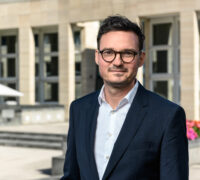How hard can change be?
Change is hard. Moving the dial on diversity in any meaningful way surely calls for a substantive shift in mindsets, HR practices, metrics, and measurement systems we use – and in the time that we devote to DE&I – time that is in very short supply for leaders juggling strategic priorities in our competitive, uncertain and fast-moving world. Or does it?
I have long been fascinated by organizations that do things a little differently, those that diverge from the norms of commercial enterprise in some way. In my research, I’ve looked at organizations predicated on something other than just profit: social enterprises, organizations with sustainable business models, startups, and enterprises that want to take the common good center stage. These are not communities that operate completely outside existing markets, on the contrary. They also sell their goods and services like other companies, but they do not distribute their profits to shareholders or donate to charity; instead, they aim at “doing good while doing business.” And I’ve found something interesting. These alternative companies also frequently diverge in the way that they approach DE&I.
Take one of the anonymous case studies, I will call PeerCoaching, a social enterprise in Austria working to bridge the employment gap within immigrant and refugee communities and people with disabilities and learning difficulties. PeerCoaching works on both sides of the divide: They educate, train, coach, and support people to help them gain a foothold in the labor market. At the same time, they consult with private and public organizations to improve the integration and workplace well-being of these employees.
The nature of the work, of course, positions PeerCoaching to do things a little differently in DE&I –but perhaps more so than might meet the eye. For instance, instead of simply providing services for these marginalized groups, PeerCoaching works with them to develop and provide the services that they need. They hire trainers with learning difficulties to design and deliver IT courses to people with learning difficulties. When they hire new staff, people from the target group run the interviews – because they know best who can support them, not the social workers and counselors. Also, at the senior management level, PeerCoaching operates differently. Even though the organization is formally led by the two co-founders, all decisions are made by an open executive team, in which all members can volunteer to participate for one year. They just have to be aligned with their team leaders and commit themselves for one year. In practice, this has meant bringing one of their IT trainers with learning difficulties into the executive team, a decision that their CEO reflected in an interview like this:
“We pondered how hard it would be to bring someone with learning difficulties into two-hour meetings if things would have to be explained several times. But we wanted to include his voice, and he wanted to participate. So, before each executive meeting, I made time to work through the agenda with him beforehand. We made a small change in structure to allow him to participate.”
The result? Key decision-makers at PeerCoaching have acquired a dynamic and first-hand understanding of the realities, needs, and challenges of the audience they address. The risk for misinterpretation and misalignment has been drastically reduced. The cost to their CEO in time is less than one hour per month, but they demonstrated how inclusion and participation are possible even against common-sense odds.






 Audio available
Audio available